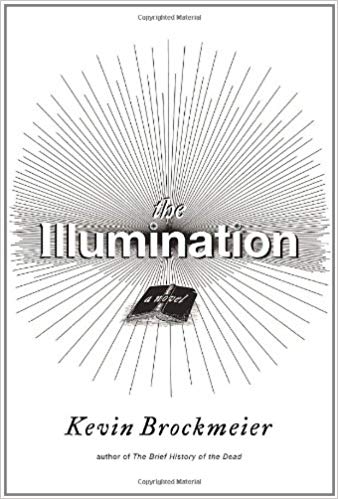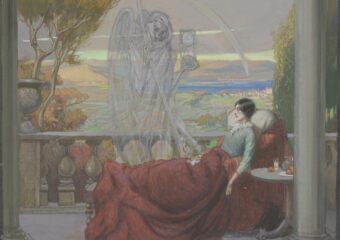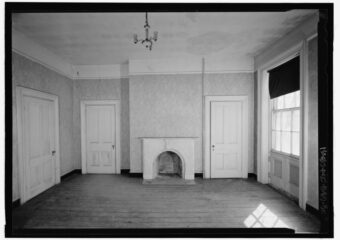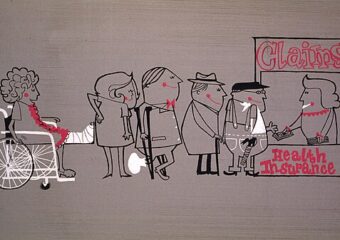Kevin Brockmeier
Pantheon Books
New York, NY
2011
257 pages
According to the Art:
Through the use of speculative fiction, the author explores how we might react when we can have no doubt about someone else’s pain, injury, or disease.
Synopsis:
Kevin Brockmeier constructed this novel of speculative fiction as six individual stories. No overriding plot carries across all the stories, and neither does any of the individual stories have much of a plot. But each is tangentially related to the subsequent story through a journal comprising love notes written daily by a husband to his wife that passes from one story to the next as a result of various circumstances and happenstances.
I love the ball you curl into when you wake up in the morning but don’t want to get out from under the covers. I love the last question you ask me before bedtime. I love the way you alphabetize the CDs, but arrange the books by height. I love you in your blue winter coat that looks like upholstery fabric. I love the scent of your hair just after you’ve taken a shower…
p. 16
The stories share characters, but only insofar as they are involved in the transfer of the journal from one story to the next. The principal characters in the six stories are: divorced young woman; photojournalist; fifth-grade boy; Christian missionary; book author; and homeless bookseller.
Also connecting the stories is a phenomenon—”The Illumination”—in which visible light is produced from the location of the body where there is pain, injury, or disease, and in one story, inanimate objects, including the journal. It just started to happen.
The Illumination: who had coined the term, which pundit or editorial writer, no one knew, but soon enough—within hours, it seemed—that was what people were calling it. The same thing was happening all over the world. In hospitals and prison yards, nursing home and battered women’s shelters, wherever the sick and injured were found, a light could be seen flowing from their bodies. Their wounds were filled with it, brimming.
p. 138
The Illumination is part of every story, but never the main subject. It’s noticed, it’s discussed, and it’s contemplated. The stories show the Illumination in different situations and contexts giving readers different interpretations of its possible purposes and effects, each of which shines a light on modern-day humanity.
Analysis:
Elaine Scarry, in her book, The Body in Pain, says that “to have great pain is to have certainty; to hear that another person has pain is to have doubt.” Part of what is at work in generating and maintaining this doubt, in her analysis, is the absence of any way for people to describe their pain. “Physical pain not only resists language, but actively destroys it,” she says, and then puts a finer point on the problem: “It resists objectification in language.” Thus, if a person doesn’t manifest outward signs of pain, and language can’t convey it, then it’s all that much easier for others to operate as if pain doesn’t exist for that person.
One of Scarry’s ideas for getting around this problem calls for using “fictional analogs” to fill in where language fails. The Illumination could be a fictional analogue giving pain, injury, and pathology an undeniable and observable form. It allows everyone to see: “The old men with prostate conditions. The diabetes patients with ulcerated feet. The arthritis sufferers with swollen joints. All of them were illuminated with the telltale signs of their own infirmity.” (p. 140).
This is a premise easily constructed, but not the one behind Brockmeier’s motivation for the book.
It emerged from a long period of ill health…I was thinking about the various forms of pain and illness people are forced to endure, wondering, really, what could all that suffering possibly be any good for, when I found myself conducting a thought experiment: What if our pain was the most beautiful thing about us? What if, moreover, our pain was what made us beautiful to God? I had an image of someone who was suffering so profoundly that he was quite literally glowing. This simple equation, of pain with light, gave birth to the entire book. The novel offers a long series of rearticulations of that founding image: a world full of illnesses and injuries, all faceted with beauty like a jewel.
Nevertheless, Brockmeier services Scarry’s call for “fictional analogues.” His fictional analogs, however, relate to one of two categorical reactions embedded among the stories and voiced through their characters:
- We live with pain and are given a way to convey its existence through the illumination, which can generate acknowledgement and accommodation. Whereas this category conforms to Scarry’s premise, Brockmeier goes further linking the Illumination as a way to generate a response for people in pain, through which “God was lending them His attention…looking on with loving compassion…a product of His sympathy.”
- We live with pain and its features that call attention to it as a mere aesthetic characteristic of people in pain, through which “God was lending them His attention” based on a “cultivated interest in suffering,” and as a “product of His esteem for certain forms of afflicted beauty.” (p. 163)
The various scenarios among the linked stories generally attach to one of these two categories, although not always in an obvious way.
While the novel’s premise could lead potential readers to expect stories showing ways in which the Illumination could remove all or some of the doubt that exists about the pain others claim, and to their benefit, the reader will instead get a mix of pessimism and nihilism, aspects of the novel that are not so speculative, and all too human. Even in the case in which doubts about pain are removed, the stories depict an entrenched human nature that still resists responding to needs the Illumination identifies.
Was it discourteous to admit that you could see a person’s sickness playing out on the surface of his body? What if it was a form of sickness that had always previously been hidden? (p. 140)
It was important that the workplace remain professional. They all tried their best not to acknowledge one another’s suffering. (p. 33)
Now there were children who had come of age knowing nothing else…they learned whose hurt to assuage and whose to disregard. (p. 164)
Nihilism manifests through one of the characters, the Christian missionary, questioning God. Channeling similar questions of God’s intent that have been asked for thousands of years, the missionary wonders how there can be a God at the same time there is,
‘A world of spinal meningitis. Of cerebral palsy. Of neurochemical imbalances that made the weakest among people hate having to exist. Of genetic disorders that blanketed their skin in disorders.’ Could He see them in their pain? Was He awake at all behind the lit windows of Heaven? He wonders further, ‘Was it possible for God to sin?’ (p. 166).
p. 166
The linkage to God, however, could draw readers into theological debates at the expense of giving consideration to the human actions that in effect represent what in the book is called a cultivated interest in suffering—think car racing, bullfighting, mixed martial arts.
The novel asks us to consider how we might react when we can have no doubt about someone’s physical pain. It leaves us with the sentiment that given the choice of knowing through a phenomenon like the Illumination, we would prefer to maintain doubt about someone’s pain, become inured to it, or think of it as an inalienable component of it. Elaine Scarry would be disappointed. Brockmeier might say blame God.
Also:
The Illumination was named a Best Book of the Year in 2011 by National Public Radio, The Seattle Times, The Kansas City Star, and Philadelphia City Paper.
A version of this review is posted at the NYU Literature, Arts and Medicine Database.



